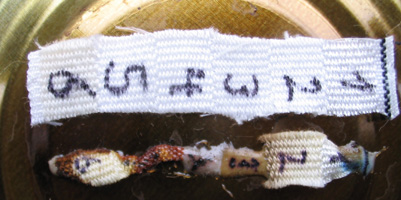 .
.
Materials
Tray, stripe (1 cm) of multifiber
6 (MF6): Diacetate (1), cotton (2), polyamide (3), polyester (4), polyacrylic
(5), wool (6),
steam iron, micro spirit
burner, circle steel lid of a can, test tube holder (wooden clothes peg
wrapped with aluminium foil, methylated spirit, matches.
Experiment
1. Look for a steam iron
(Fig. 1) to test, which fabric needs the lowest temperature compared to
wool and to cotton
2. Label a MF6 stripe (1
cm) 1 - 6. (in Figure 2 the
6 fibres are saparated).
3. Place the stripe on the
middle of the circle steel lid (upper part of Fig. 3).
4. Get
familiar with the micro spirit burner, lit it.
5. Hold the lid with the
MF6 stripe above the flame and heat the stripe equaly by moving the lid
to the right and to the left.
6. Stop heating as soon as
the samples 1, 3, 4, 5 look like in Fig. 3.
Observation
(Fig. 3 lower part)
1. The synthetic fibres of
polyamide (3) and polyester (4) melt first, cellulose diacetate (1) and
polyacrylic (5) follow.
2. A the same temeprature
wool (6) shows only minor changes and cotton (2) does not change at all.
Explanation
1. The synthetic fibres 3,
4, 5 as well as cellulose diacetate (1) are made of thermoplastic substances.
This means that their very thin fibres melt and loose their shape.
The experiment shows, why, clothes made of synthetic
fibres are very dangerous in case of burning.
2. The natural fibres cotton
and wool resist the heat produced in the experiment.
___________________________________________________________________________________________________________________________________________________________________________
back.............................................................................................
last modification: 26.02.2006